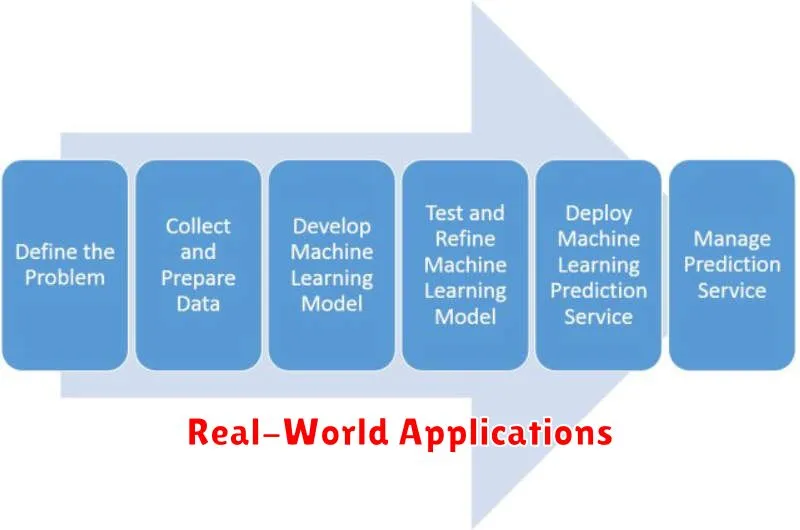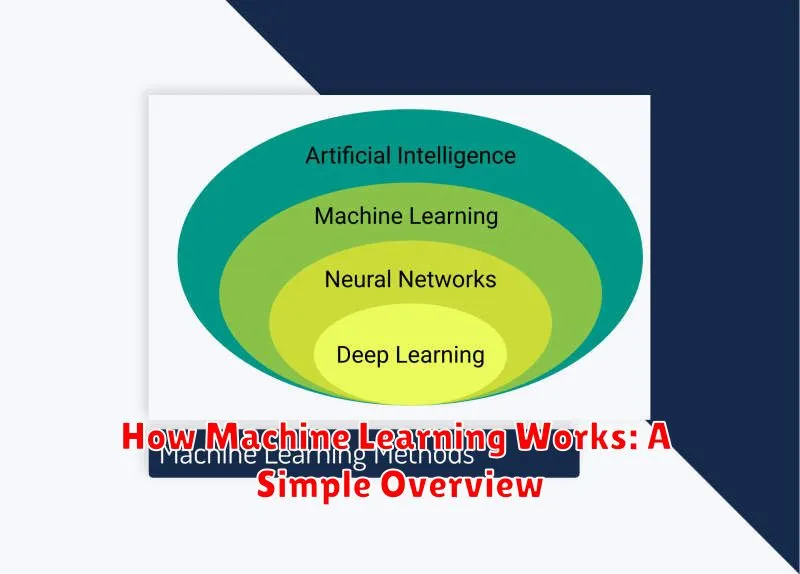Machine learning is transforming the world around us, powering everything from personalized recommendations to self-driving cars. But how does this groundbreaking technology actually work? This article provides a simple overview of machine learning, explaining its core concepts and demonstrating how it’s used to build intelligent systems. Whether you’re a seasoned tech professional or simply curious about this fascinating field, understanding the fundamentals of machine learning is increasingly important in today’s world. From algorithms and data to training and prediction, we’ll break down the essential components of machine learning in a clear and concise manner.
Delve into the world of machine learning and discover the different types of machine learning, including supervised learning, unsupervised learning, and reinforcement learning. We’ll explore the key differences between these approaches and illustrate their applications with real-world examples. By understanding how machine learning algorithms learn from data, you’ll gain valuable insights into the potential and limitations of this powerful technology. This overview will equip you with the foundational knowledge needed to navigate the exciting and rapidly evolving landscape of machine learning.
What Is Machine Learning?
Machine learning is a subfield of artificial intelligence (AI) that focuses on enabling computer systems to learn from data without explicit programming. Instead of relying on pre-defined rules, machine learning algorithms identify patterns, make predictions, and improve their performance over time based on the data they are exposed to. This learning process allows machines to adapt to new information and solve complex problems in a way that mimics human learning.
Essentially, machine learning algorithms build a model based on input data. This model is then used to make predictions or decisions on new, unseen data. The accuracy and effectiveness of the model are crucial and depend on the quality and quantity of the training data.
Supervised vs Unsupervised Learning
Machine learning algorithms can be broadly categorized into supervised and unsupervised learning. Supervised learning uses labeled datasets to train algorithms that classify data or predict outcomes accurately. The algorithm learns from the labeled training data to map inputs to outputs.
In contrast, unsupervised learning explores unlabeled data to discover hidden patterns or group similar data points. It doesn’t have predefined output categories. Common unsupervised learning techniques include clustering and dimensionality reduction. These algorithms aim to identify inherent structure within the data without explicit guidance.
Popular Algorithms and Models
Several algorithms and models are commonly used in machine learning, each suited to different tasks and data types. Supervised learning algorithms, like linear regression, predict continuous values. Logistic regression, another supervised method, predicts categorical outcomes. Decision trees create a tree-like model of decisions and their possible consequences, useful for both classification and regression.
Unsupervised learning algorithms find patterns in unlabeled data. K-means clustering groups similar data points together, while principal component analysis (PCA) reduces the dimensionality of data while retaining important information.
Real-World Applications

Machine learning has permeated numerous aspects of modern life. From the mundane to the extraordinary, its impact is undeniable. Some key examples include:
- Personalized Recommendations: Streaming services and online retailers utilize machine learning to suggest movies, music, and products tailored to individual preferences.
- Medical Diagnosis: Machine learning algorithms can analyze medical images and patient data to assist in diagnosing diseases like cancer and predicting patient outcomes.
- Fraud Detection: Financial institutions employ machine learning to identify and flag potentially fraudulent transactions in real-time.
- Self-Driving Cars: Autonomous vehicles rely heavily on machine learning to navigate roads, interpret traffic signals, and avoid obstacles.
Challenges and Ethical Issues
Despite its potential, machine learning faces significant challenges. Data bias can lead to unfair or discriminatory outcomes, as models trained on biased data will perpetuate and amplify those biases. Data privacy is another key concern, especially with models trained on sensitive personal information. Ensuring data security and responsible data handling practices is crucial.
Explainability and interpretability are ongoing challenges. Complex models, like deep neural networks, can be difficult to understand, making it hard to identify the reasons behind their predictions. This lack of transparency can erode trust and hinder accountability.
Ethically, machine learning raises questions about job displacement due to automation, the potential for misuse in areas like surveillance and autonomous weapons, and the responsibility for decisions made by algorithms.
Machine Learning vs AI vs Deep Learning
While the terms are often used interchangeably, there are key distinctions. Artificial intelligence (AI) is the broad concept of machines performing tasks that typically require human intelligence. Machine learning (ML) is a subset of AI where machines learn from data without explicit programming. Deep learning (DL) is a specialized subset of ML that uses artificial neural networks with multiple layers (hence “deep”) to analyze complex data and extract higher-level features.
Think of it like Russian nesting dolls: AI is the largest doll, encompassing ML. Within ML sits the smallest doll, DL. DL enables more advanced capabilities but requires significantly more data and computational power than traditional ML algorithms.

